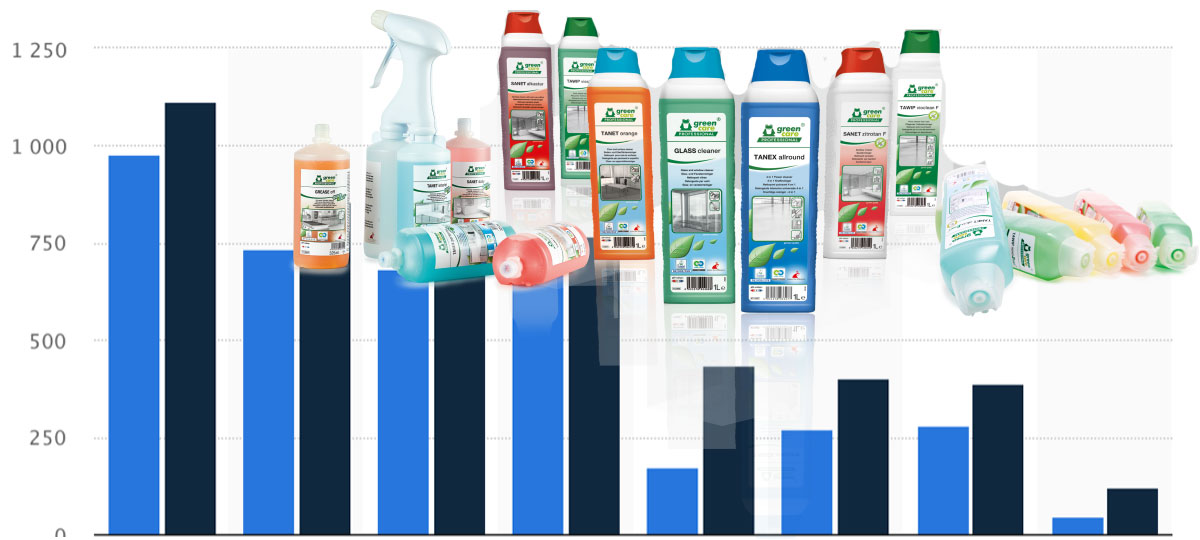It is important for ink suppliers to keep with the pace as there is a surge in customers as label converters witness. The newest ink sets should be performing well and must also provide greater speeds along with faster turnaround times. Additionally, it is also important for them to shine with a multitude of printing technologies. Ink manufacturers are now innovating at a great pace with products ranging from UV- and water-based inkjet to flexo.
Quality plays an important role when it comes to inks. Andrew Wasserman, the managing partner of Cyngient explained by saying “We continue to see customers and brands requesting more robust inks and coatings, not only from a decorative standpoint but also looking for stronger product performance with regards to ink adhesion, low odor and runnablilty,” he also said “These products must meet the demands of production speeds without the loss of quality.”
To stand apart in the crowded shelves converters use a number of techniques to make sure that the label pops. One such method is to use difficult-to-print substrates, which puts a strong onus on ink suppliers.
According to Dennis Sweet, vice president, commercial, Rycoline and Distributors, North American Inks, Sun Chemical they have developed a Photon technology to create an extraordinarily good adhesion characteristic made especially for difficult substrates. He said “It has high opacity, especially with whites, and has low to virtually no odor and is BPA free. The technology is also extremely easy to clean up on-press, as there’s not a lot of build-up on anilox rolls. We’re planning on rolling this technology out in the next few months.”
Another method has been applied by Hubergroup USA. They have incorporated graphics with various foils and specialty coatings such as textures, glow in the dark, and pearlescent. When it comes to a flexible packaging point of view, Clinton Melius, director of liquid inks, North America, hubergroup USA, has seen a strong push to compostable pouches that can be BPI certified.
It goes without saying that quality is as important as sustainability which is one of the growing trends noticed by the industry experts.
Shawn Scheel, the applications team leader for flexible packaging at ACTEGA has said “The key trend is the increasing demand for environmentally friendly, energy curable products that are safe for food packaging,” also “Ink products that achieve certain regulatory benchmarks, such as Nestle Compliance, are gaining popularity as energy curable technology continues to advance. Sustainability, in general, is a topic that is continuing to gain attention, and depending on the material, inks need to perform in a certain manner to ensure that sustainable solutions are effective in achieving the desired results.”
Keeping up with the sustainability trend there has been a migration to LED inks and equipment. The usage of hybrid inks that can print conventional UV arc or LED are now being more commonly used.
Jon Fultz who is the packaging product manager at Americas, Fujifilm North America Corporation, Graphic Systems Division has said “It is evident that LED is now becoming accepted by more than only the early adopters,” he added “This is a result of the latest LED equipment and ink technologies that even further reduce the carbon footprint and energy costs compared to the early conventional LED systems. It also allows for elimination of heat from the flexo printing process. These systems and inks have come down in price considerably, making the payback period very attractive for retrofitting existing flexo presses or as OEM equipment on new presses.”
Even though there has been uncertainty caused by the pandemic, there has been the production of new and even more exciting products brought by the suppliers, which is often the result of overtime work to help get the inks into the hands of the converters. Inks with flexible packaging and labels targeted as growth areas has been developed by Kao Collins keeping in mind an overarching theme of sustainability and reducing environmental impact.
The marketing manager of Kao Collins, Kristin Adams has said “Thoughtful, purposeful consumption is at the heart of our organization,”. “Water-based Lunajet uses pigment Nano dispersion for printing flexible packaging and thin films. At the same time, bio-based, mineral-oil-free inks meet European food safety standards and reduce the carbon footprint.”
The relationship between inks and food have always been strong relationship. It is important to ensure safety for direct and indirect food contact inks. Any problem in that area can be catastrophic for brands. Keeping this demand in mind, Flint Group has debuted its EkoCure Ancora Dual Cure food contact material (FCM) UV-curable ink for food, pharmaceutical and cosmetic label and flexible packaging applications.
An increased production time is also available for UV LED curing as lamps require no warming or cooling before and after operation. A speed increase of up to 25% has been observed due to faster curing times by the Flint Group. Along with this, for brand owners, the assurance of an effective migration barrier which has been made possible by the ink in combination with the substrate, will in all probability facilitate the move to lighter and easier-to-handle packaging.
Catharina Aaroe, who is the product and continuous improvement manager at Narrow Wb, Flint Group, has said “There is no doubt that switching from mercury to UV LED curing yields cost and production benefits throughout the production process,” and also “The addition of EkoCure Ancora Dual Cure inks makes these benefits accessible to food-contact and pharmaceutical value chains, combined with the assurance of compliance to the highest safety standards.”
